El cançoner F: estudi codicològic i literari
Departamento/Instituto
Universitat de Girona. Departament de Filologia i Comunicació
Universitat de Catalunya. Institut de Llengua i Cultura Catalanes
Programa de doctorado
Programa de Doctorat en Ciències Humanes, del Patrimoni i de la Cultura
Resumen
ENG- The Spanish Manuscripts 487 of the National Library of France (Fa) and 381 of the Inguimbertine Library (Fb) form a single codex that tradition has designated with the name Cançoner de Carpentràs. Compiled between the end of the 14th and the beginning of the 15th centuries, it constitutes one of the most important preserved anthologies of Catalan narrative poetry prior to the 15th century. It contains thirteen narrative works, along with two in prose and eight in lyric verse, most of them unica, anonymous, and of uncertain dating. Among the works with known authors, we find the Faula by Guillem de Torroella (~1348 – 1375), the Lausor de la Divinitat by Aimó de Cescars (author about whom there is no data, although there is information about the dedicatee Guerau de Requesens, bishop of Lleida from 1380 to 1399), the Arnès del cavaller by Pere March (1338 – 1413?), the Llibre de bons amonestaments, and the Cobles de la divisió del regne de Mallorca, the last two by Anselm Turmeda (~1350/1355-d.1422). Among the anonymous works in narrative verse, it contains some of special relevance, such as the Planys del cavaller Mataró (unicum), the Frayre de Joy e Sor de Plaser, the Facet (unicum), the Història de l’amat Frondino i de Brisona (unicum), and the Catalan version of Llibre de set savis de Roma. It is noteworthy the incorporation of a lyrical corpus, the Cobles fetes per lo preciors cors de Jhesuchrist per alguns homens de València (all unica poems), possibly a sample of contest poetry. After a review of the state of the question, this thesis includes two distinct parts. The first is a comprehensive codicological description of the manuscript and a proposal to reconstruct the original structure of the folios, as the codex fragmented in the 19th century, and it also presents significant initial and internal gaps. The reconstruction establishes how the fragment of the manuscript preserved in Paris (Fa) integrates into the internal gaps of 11 and 39 folios of the manuscript preserved in the Inguimbertine Library (Fb), and is based on the analyzed codicological data that allow us to affirm that, in its original state, the codex was composed of quires of 8, 10, and 11 bifolios. On the other hand, the analysis of watermarks and pagination allows narrowing down the estimated dating of the manuscript and presenting a hypothesis about the copying system that suggests a more defined criteria for the selection of works by the compiler than previously considered. The second part of the thesis analyzes the internal structure of the manuscript, which much of the criticism had considered haphazard, with some proposals indicating didactic intention. However, some proposals already pointed out a certain prevalence of works with didactic intent. After studying the arrangement and characteristics (both structural and argumentative) of the works, and collating them with the codicological data studied in the first part of this work, especially concerning the use of different inks and the management of blank spaces, the existence of a thematic compilation program articulated is proposed. These sections include allegorical-moral works, courtly-love works, didactic-doctrinal works, and works composed by Turmeda, separated by religious texts acting as a break. Finally, all available historical data of the manuscript are presented, studied and compared with the data of the selected works to try to specify the cultural and literary context in which the compilation took place. The evidence points to a connection with the literary environments of Valencia or Mallorca at the end of the 14th century, partly shared with the Cançoner Aguiló (E), the other important anthology of Catalan narrative in verse. However, in the case of E, the connection with the literary environment of the brothers Pere and Jaume March is much clearer. The thesis is illustrated with a significant number of photographs and various annexes, especially dedicated to presenting other manuscripts containing testimonies of some of the works of F or possibly linked to it for historical reasons
CAT- Els manuscrits Espagnol 487 de la Biblioteca Nacional de França (Fa) i 381 de la Biblioteca Inguimbertine (Fb) conformen un únic còdex que la tradició ha designat amb el nom de Cançoner de Carpentràs. Compilat entre final del segle XIV i principis del XV, constitueix un dels dos reculls conservats més importants de la narrativa catalana en vers anterior al segle XV. Conté tretze obres de narrativa, a les quals n’hi hem d’afegir dues en prosa i vuit en vers líric, la majoria unica, anònimes i de datació incerta. Entre les obres amb autor conegut hi trobem la Faula de Guillem de Torroella (~1348 – 1375), la Lausor de la Divinitat d’Aimó de Cescars (del qual no en tenim dades, però sí del dedicatari Guerau de Requesens, bisbe de Lleida, 1380 – 1399), l’Arnès del cavaller de Pere March (1338 – 1413?), el Llibre de bons amonestaments i les Cobles de la divisió del regne de Mallorca, totes dues d’Anselm Turmeda (~1350/1355 – d.1422). Entre les obres anònimes en vers narratiu, en conté algunes d’especial rellevància, com els Planys del cavaller Mataró (unicum), el Frayre de Joy e Sor de Plaser, el Facet (unicum), la Història de l’amat Frondino i de Brisona (unicum) i la versió catalana del Llibre de set savis de Roma. Crida l’atenció la incorporació d’un corpus líric, les Cobles fetes per lo preciors cors de Jhesuchrist per alguns hòmens de València (totes peces unica), probablement una mostra de poesia de certamen. Després d’un estat de la qüestió, la tesi inclou dues parts diferenciades. La primera és una descripció codicològica exhaustiva del manuscrit i una proposta de reconstrucció de l’estructura dels plecs original, ja que el còdex es va fragmentar al segle XIX, i presenta a més una important llacuna inicial i dues d’internes. La reconstrucció estableix com el fragment conservat a París (Fa) s’integra en les llacunes internes d’11 i 39 folis del fragment conservat a la Inguimbertine (Fb), i es fonamenta en una anàlisi codicològica que permet afirmar que, en el seu estat original, el còdex estava compost per plecs de 8, 10 i 11 bifolis. D’altra banda, l’anàlisi de les filigranes i de la impaginació permet acotar l’estimació de datació del manuscrit i presentar una hipòtesi sobre el sistema de còpia, tot suggerint un criteri de selecció de les obres per part del compilador més definit que no s’havia considerat fins ara. La segona part de la tesi analitza l’estructura interna del cançoner, que bona part de la crítica considera atzarosa, amb algunes propostes que hi assenyalen una intenció didàctica. Després d’estudiar l’ordenació i les característiques (estructurals i argumentals) de les obres, i de col·lacionar-les amb les dades codicològiques de la primera part d’aquest treball, en especial amb l’ús de tintes diferents i amb la gestió dels espais en blanc, es planteja l’existència d’un programa de compilació temàtic articulat en quatre seccions (obres al·legòrico-morals; obres corteses i amoroses; obres didactico-doctrinals; i obres de Turmeda), separades per textos de contingut religiós que actuen com a cesura. Finalment, es presenten i s’estudien totes les dades històriques disponibles sobre manuscrit i es col·lacionen amb les dades de les obres seleccionades per intentar precisar el context cultural i literari en què es va dur a terme la compilació. Els indicis apunten cap a una vinculació amb els ambients literaris de València o Mallorca de finals del segle XIV, compartida en part amb el Cançoner Aguiló (E), l’altre important recull de narrativa catalana en vers, tot i que en el cas d’E la connexió amb l’ambient literari dels germans Pere i Jaume March és molt més clara. La tesi s’il·lustra amb un important nombre de fotografies i amb diversos annexos, dedicats especialment a presentar altres manuscrits que contenen testimonis d’obres contingudes a F o possiblement vinculats amb aquest recull per qüestions històriques
Palabras clave
Manuscrit medieval; Manuscrito medieval; Medieval manuscript; Segle XIV; Siglo XIV; 14th century; Segle XV; Siglo XV; 15th century; Anselm Turmeda; Narrativa catalana medieval; Catalan medieval narrative; Guillem de Torroella; Pere March
Materias
00 - Ciencia y conocimiento. Investigación. Cultura. Humanidades; 09 - Manuscritos. Libros raros y notables; 82 - Literatura; 94 - Historia general y por países



